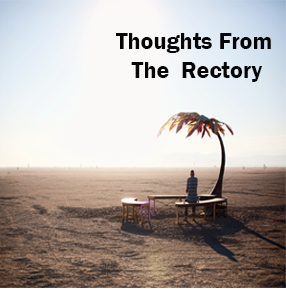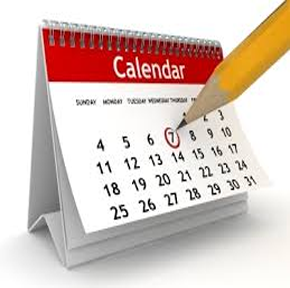 Thoughts From The Rectory
Thoughts From The Rectory
St Chads Story
A STUDY OF THE ESTABLISHMENT OF CHURCH OF ENGLAND PARISHES AND THEIR CHURCHES IN THE NEW TOWN OF BASILDON BETWEEN 1949 AND 1964
The Reverend N. Martin Wood
The following section of Revd Martin Wood’s study relates to St Chad’s. The whole study gives an in depth understanding of the challenges faced by those who have gone before us. The whole study is available if required.
The church of St. Chad, Vange – consecrated November 17th 1959
Although the parish of Vange has very limited records from the 1950s, it is still possible to relate how the church of St. Chad was built using the archives of the Diocese and the Corporation. Humphrey Moorhouse was Rector of Vange from 1945 to 1983. He now lives in retirement a few miles outside the parish. On being consulted about this dissertation he wrote down his memories of that time, the beginning of which set the scene very well:
In 1931 a new Church hall was built in Vange. It was not merely for recreation, but also for worship. So a third of the new building was permanently sectioned off as a small Church – seating about 60 people, and known as St. Pauls. This shows that some 15 years before the new town of Basildon was even thought of, it was felt that the main population of Vange – which was in the region of 1 mile away from All Saints Church [Vange parish church], needed a building much closer to them.
Basildon Corporation identified a site for a new church in 1955, immediately to the south of St Paul’s on the corner of the street in which it is set with, what was then, the A13. An internal debate in the Corporation resulted. The Chief Estates Officer, Mr West was concerned that the Corporation would lose money, because ‘We will be buying at commercial values [the three shops and two houses then on the site] and disposing of a very valuable corner site at a quarter residential value’. The Chief Architect, Mr Tweddell, however, considered it a good site because a church would be ‘a suitable architectural feature at the end of the shopping street’ and because the only alternative he could think of for the site was a health centre. In August the Corporation’s Sites and Plans committee sided with the Estates department and decided to recommend that a site immediately to the north of the hall be offered instead. The Corporation duly made the offer which the diocese accepted in October though this meant building the church on a north/south axis.
The diocese, however, had also encountered a problem. In March 1955 the parish had appointed Messrs Humphrys & Hurst of Marylebone as architects for the new church with a brief to design a building costing £20,000. A few months earlier, the West Ham Archdeaconry sub-committee had decided not to rebuild the church hall of St. Stephen, Upton Park which had been destroyed by enemy action and the Diocesan Reorganisation committee decided to ‘port’ the War Damage Commission’s compensation money to pay for St. Chad, Vange. This, however, was only expected to raise £17,000. The diocese suggested that the parish should raise the £3,000 shortfall constructing a building without vestries until the money had been raised. The parish, however, did not believe it could raise such a sum so the diocese asked the architect to produce a design within £17,000. The architect complied and early in January 1956 plans for a church seating 250 were considered by the Corporation who were not impressed, complaining that the church would only be thirty feet high and the tower, although shown, would not be built with the church. Meetings followed between the architects of church and Corporation and a revised plan was produced at the end of January of which both diocese and Corporation approved. The new design added three feet to the height of the building and included a fifty-eight feet high tower at the expense of previously proposed ornamentation. As soon as the site had been acquired building could begin. Ten months later, however, the Estates Department reported to the Corporation that it had been unable to comply. One of the plots on the site was owned by Mr Wellman, ‘a gentleman who was a local preacher at a nearby Gospel Hall, [who] was not too thrilled at the idea of an Anglican Church being built on his land’. Wellman tried to sell direct to the diocese to get a better price, without success, and then held out for the £400, which he believed the land was worth, even though the Corporation had valued his plot at £270. It took a further nine months before the site was finally acquired on July 20th after a compulsory purchase order and a complaint by Wellman to the Ministry of Housing and Local Government.
By the time the site was acquired further problems had arisen. Internal misunderstandings between the Corporation’s Estates and Architects departments had led to the church architects being told that they could get on site sooner than was possible, causing the contract to be signed too early. This had resulted in increased costs and it had now become apparent that the ported payment from the hall in Upton Park would come to only £15,355. The church architects responded by submitting an amended design including a reduction height of the church by four feet. On enquiry the Corporation discovered that it would only cost an extra £420 to restore this lost height. The Corporation offered to reduce the cost of the site by £210 if the height was restored. In September the diocese turned down the request saying that neither they nor the parish had any funds available. In November the Corporation instructed the Chief Estates Officer to insist. Finally, after challenging the legality of such an insistence, the diocese, ‘after considerable discussion’, decided to comply. The building contract now stood at £18,734 and since the parish was already repaying a loan for repairs to its parish church, the diocese decided to meet the shortfall. Building could finally begin, four months after the contractors had first gone on site. Lady Whitmore laid the foundation stone on December 15th 1957. Furnishings for the church were obtained from the London Diocesan store of furniture from redundant churches. The bell came from Old Shopland church in Colchester. The altar book was donated by Pitsea parish. There were still problems conveying the site as the original papers would not have allowed a new rectory to be built on it. They were not resolved until November 16th 1959. The new church was finally consecrated by the bishop of Chelmsford the following day, by which time it had been in use a year. The shortfall was made up with a grant to the church of £3,500 from the Reorganisation Fund. Meanwhile plans had been submitted to the Corporation for a new rectory next door to the church on June 30th 1958. It was designed by Messrs Wykeham, Chancellor and Bragg and paid for from the sale of the old rectory. The plans were approved and the rectory completed in 1960. The site originally identified for the church was eventually acquired and cleared of the shops and houses that were there in 1955. It was, however, never developed and has been planted as a green space with trees and grass.
Where we are





